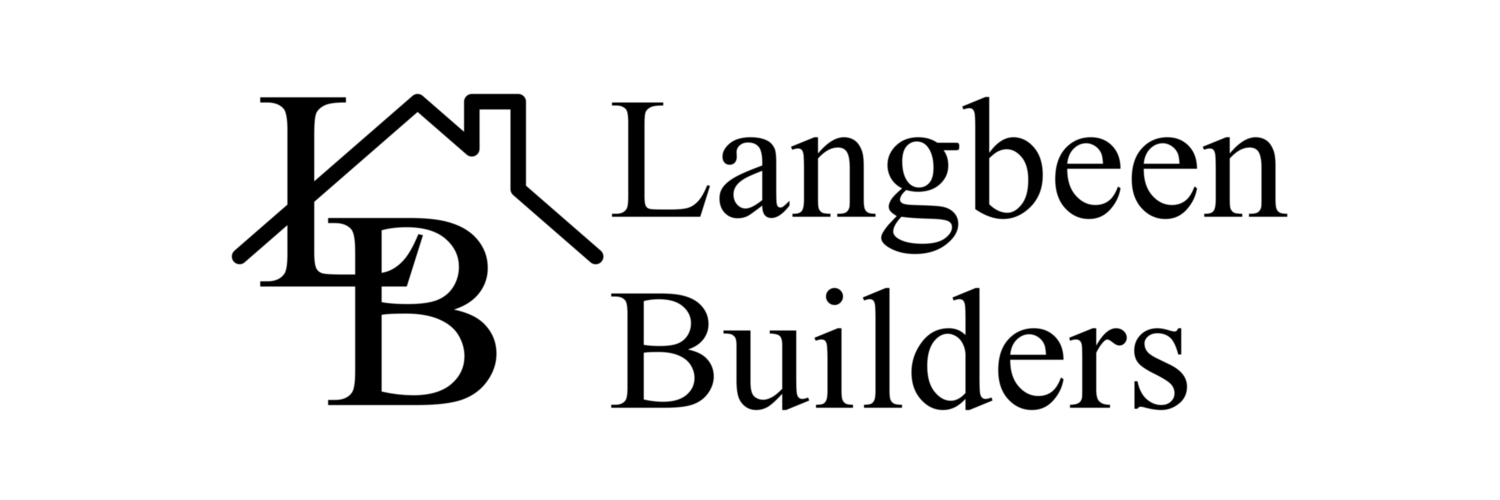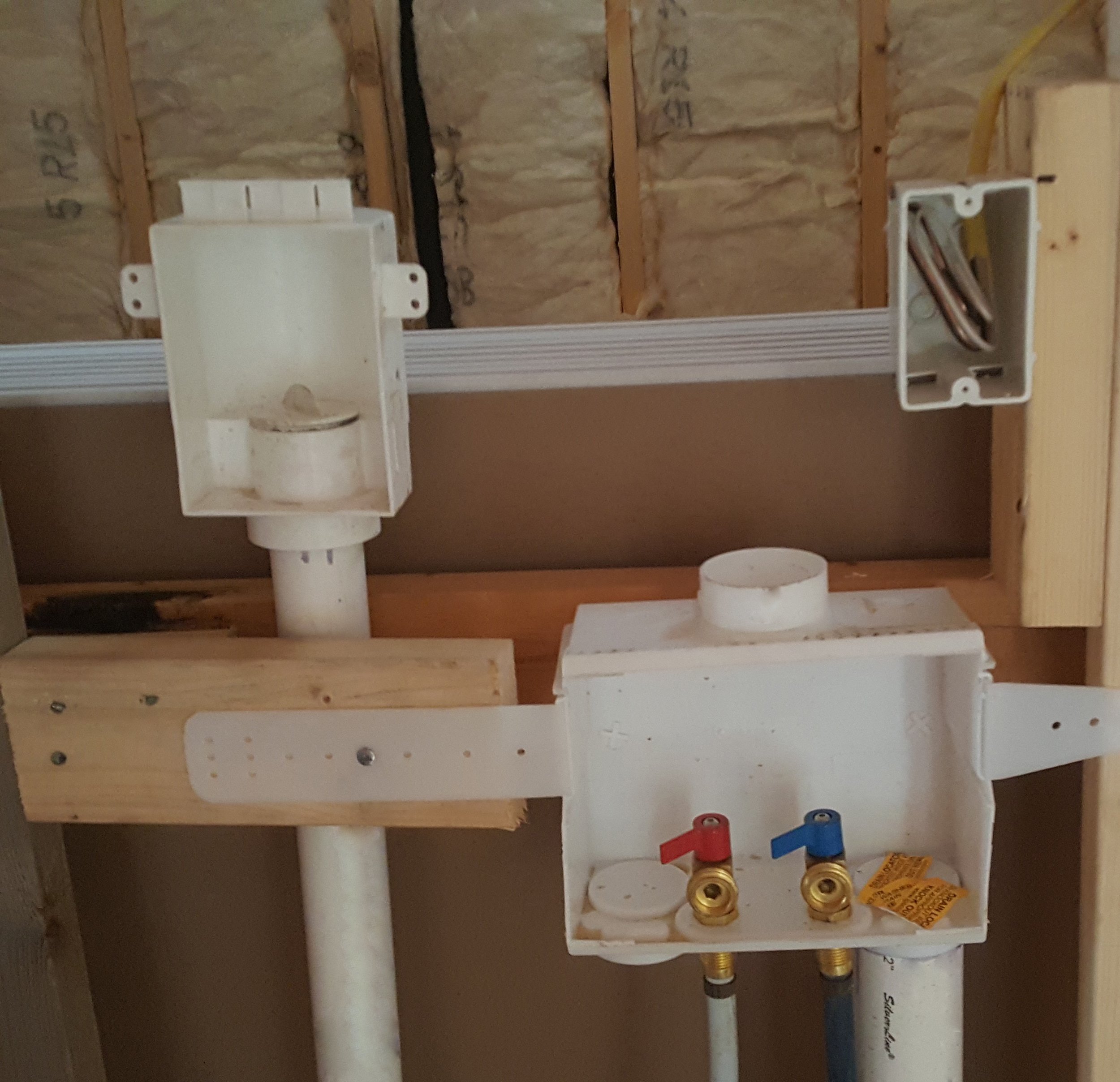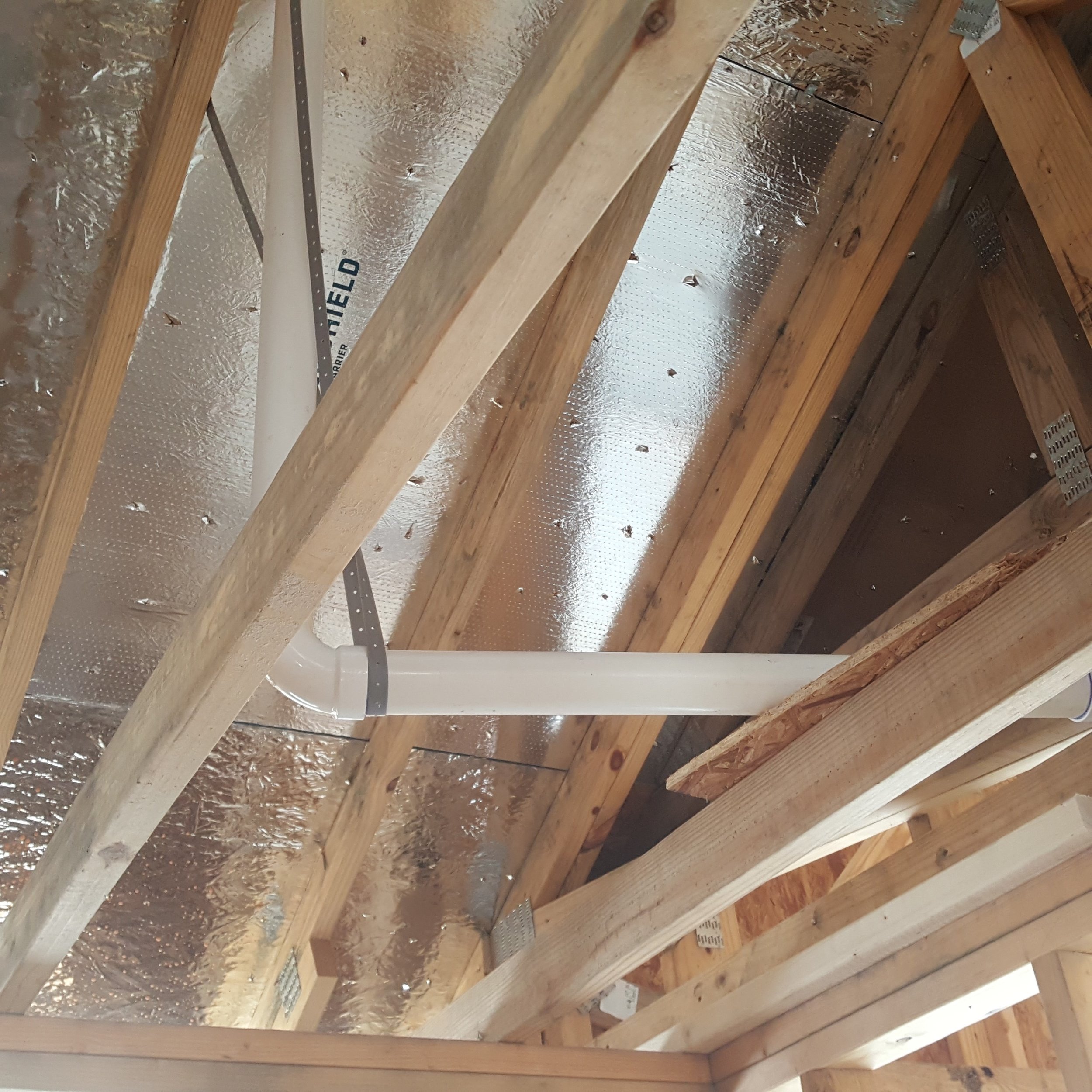THE PLUMBING ROUGH-IN
A plumbing rough-in means that all drainpipes and water supply lines have been run through bored holes in studs or other framing materials, and the plumber has made all the pipe connections. At this phase, sinks, faucets, or other fixtures have not been installed by the plumber. If the house has a concrete slab foundation, the rough-in is tied to the slab work.
Waste or drainage pipes are installed first because they are large and have less flexibility for relocation. Drainpipes cover all key parts of the house, including the kitchen, bathrooms, and laundry room. At this point in construction, vents or stacks for these pipes are attached along with seals or traps to avoid gases leaking out into the home.
Once the drainpipes and vents are in place, the plumber installs cold water, hot water, and gas supply pipes. A roughed-in bathroom or kitchen typically has capped PEX (cross-linked polyethylene) or copper water supply pipes jutting up through the floor or wall, which are generally covered to prevent debris from entering the pipes. Standard plumbing for the Boiling Spring Lakes area is PVC waste lines and PEX PVC interior supply lines.
What to Think About
While most new home construction includes basic plumbing end points such as sinks, toilets, shower, and tub, there are two fixtures that you need to think about adding or changing in your new home.
Standard Hot Water Heater vs Tankless Hot Water Heater
A standard hot water heater holds water in a tank and keeps hot water available at a specific temperature. Since it has hot water that is ready to be used, it can supply more than one faucet, shower, sink . . . at once — assuming there is enough hot water in the tank. Standard hot water heaters are easier and less expensive to install than tankless hot water heaters.
Tankless hot water heaters provide hot water on demand, only heating water as necessary. Tankless water heaters do not store hot water in a storage tank; water is heated as it passes through the water heater unit. One potential drawback to a tankless system is that the tank’s flow rate needs to keep up with the needs of the homeowner/family.
When a tankless system is requested by a client, Langbeen Builders recommends a gas-powered unit, such as a Rinnai. More information on tankless systems can be found at: How Tankless Works.
Recirculation System
A recirculating pump keeps hot water moving through hot water pipes three different ways: all the time, on demand, or set for specific hours via a timer. If hot water is not used, then it is returned back to the tank. If you think a recirculation system is an additional choice for your home, then that decision should be made at the rough-in stage. This will allow the plumber install additional pipes for the system.



